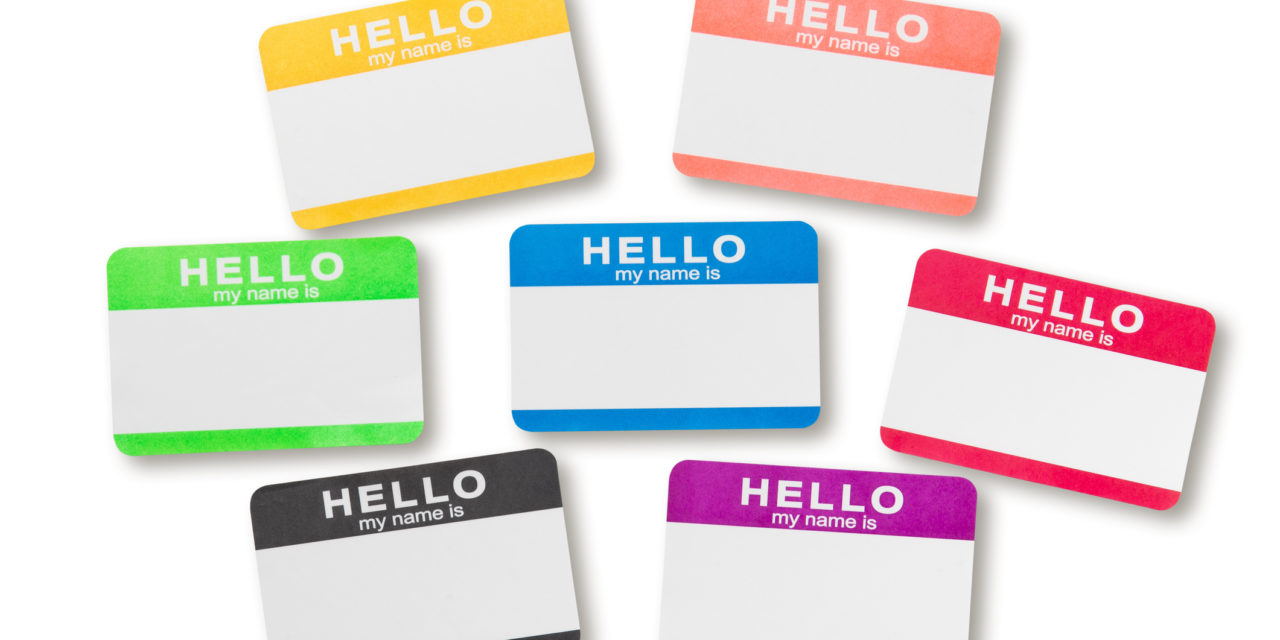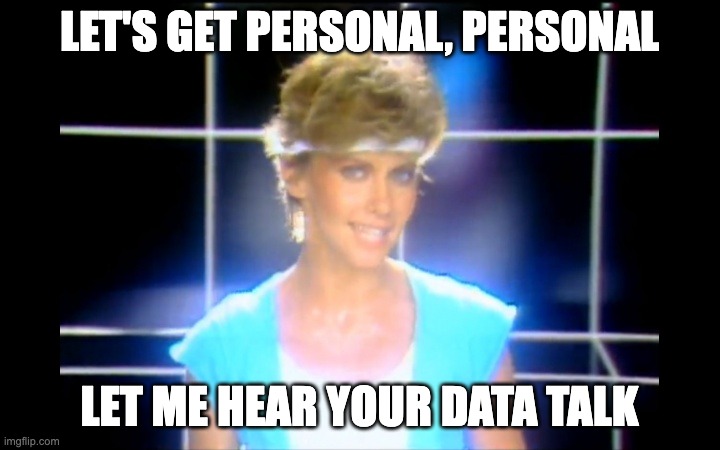Remember the good old days, when marketing personalization was a novelty in your toolbox? I mean, getting that first direct mail postcard with your name in the headline…ah, the feels!
Things have evolved, to put it mildly. You can’t just pop your recipient’s name into an email subject or headline and expect it to do the job with today’s tech-native audience.
Riddle me this: In the process of researching one aspect of this post, I searched various keyword combinations along the lines of, “data hygiene practices and personalization.” Less than 24 hours later, I got an email from Adobe inviting me by name to download an infographic on five ways to declutter your database.
Coincidence? I suspect not. I was the recipient of some pretty smooth personalization tactics, and they worked to actually make a good impression rather than creep me out, which is always a tough tightrope to walk. It was almost like mentioning to a friend in passing that my garage is a s#@$show (true, btw) and then having her get in touch later with a recommendation for a junk hauler.
So, dear reader (or should I say “Dear [FirstName]”?), let’s explore the latest best practices in B2B marketing personalization, and the technology that supports them.
Your customers expect a personalized experience
The percent of North American consumers who said they would stop doing business with a company due to lack of personalization rose from 25% in 2019 to 43% in 2021, according to a Broadridge survey of 3,000 adults. Meanwhile, countless studies and pulse surveys consistently return striking results on the benefits of personalization.
And the desire for personalization extends to B2B customers as well (after all, B2B buyers are still humans and consumers, right?). According to Salesforce research, 72% of B2B clients expect personalized engagement from vendors.
Wanna get personal in the ‘20s? Here’s how to level-up your game
The paradox is this: while customers have come to expect and welcome personalized marketing, they’ve also become jaded from shabby efforts. Poorly timed outreach, irrelevant content, recommending a product or service already purchased and in use … these personalization misfires can seriously cost you.
Yes, the cool kids are still personalizing by name, however…
If you’re using a company’s name in an email subject line – something like “How XYZ Inc. can unlock higher customer retention” – then the content provided abso-f-in-lutely better align with that company’s customer needs and pain points. And any accompanying CTA should match their place in the buyer funnel.
Do your homework first. This isn’t the time for rookie mistakes.
Now it’s about hyper-personalization to keep things relevant
Traditional personalization relies on demographic and transactional data like job title, location, industry and purchase history. Hyper-personalization applies AI-driven data analytics to interpret behavior and predict intentions, allowing you to continuously improve the customer experience by delivering relevant content, suggestions and offers.
Think about some of the best marketing personalization in the consumer world. Brands like Amazon, Netflix and Spotify use AI and predictive analytics to make relevant recommendations, gently and unobtrusively nudging the user down a feel-right path toward more purchases and/or increased loyalty and retention (but wait, this documentary looks good too!).
They’re building trust – and brand evangelists – by delivering individualized experiences that align with each person’s preferences, engagement history, onsite interactions and other relevant data points.
From a human perspective, it’s about paying attention to small details that can have a big influence on conversion. Hyper-personalization ties in particularly well with account-based marketing (ABM) strategies.
Now, I know we can’t all be Amazon (and do we really want to be, anyway?), so while this might all seem like a pipe dream, I have some suggestions to help you get on the right path. From a tech perspective, you’ll need to evaluate what you have already, how well it supports today’s standards of marketing personalization, and whether you should invest in new tools.
Your trusty wingman: marketing personalization tech staples
Personalizing the customer experience at scale, once the impossible dream, is now doable. There are scads of all-in-one personalization solutions out there, and a range of technologies specific to various personalization activities.
Here are the basic tools that underpin personalization.
CRM. The CRM, of course, is essential to personalization, which can’t happen without accurate data. A CRM optimized for personalization will allow you to easily collect and categorize data, track customer engagement and behavior, segment audience groups and tag them for targeted campaigns and integrate with your marketing automation platform for behavior-triggered outreach.
Marketing automation platform (MAP). Marketing automation lets you reach customers at scale with the right content at the right time via the right channel. It enables key personalization activities like triggering email campaigns and delivering dynamic content.
CMS. Content management systems bolstered by marketing automation allow you to serve dynamic, personalized content to user groups or according to user behaviors. Drag-and-drop features make it easy to swap out content elements and add new pages.
But first, strategy
AI-supported personalization tools might churn out algorithm-based insights and trigger if/then automations like a boss – but it isn’t. You are. You need to use everything you know about your customers to create an experience that draws them in, keeps them riveted, and ultimately promotes loyalty and conversion.
Personalization starts with knowing your audience (duh), but it has to transcend the basic foundation of familiarity with specific needs and pain points. That’s important, of course, but you need to build out your CRM with data on individual engagements and online behaviors so you can provide increasingly refined 1-to-1 personalization tailored to lifecycle stage, channel preferences and content relevancy.
Website personalization is a good place to start
With dynamic website personalization, you can automatically populate unique content tailored to a site visitor’s attributes and online behavior. The homepage is a key place to start. Some elements to consider personalizing with unique messaging include banners, headlines and subheads, hero images and social proof.
Imagine your company sells patient management software. You’re going to talk differently to a buyer for a multi-hospital health system than to a physician office manager. They have a different set of challenges and goals.
So make sure the most relevant information is visible to each of your audience segments – e.g., the health system buyer sees a testimonial from a major-market hospital; the physician office manager sees one from, well, a physician office manager in a similar-size practice.
You can take it further by automating content changes according to other attributes, like location. For example, maybe you’re hosting an event that you can showcase for site visitors from that region.
Enabling technology: MAP, CRM, CMS
Build actionable data for increasingly precise outreach
Spotlighting the most relevant content for each audience is like steroids for CTA conversion – which means you can collect increasing amounts of specific data, allowing you to sort prospects and customers more efficiently in your CRM for continued personalized engagement.
You have a lot of options for collecting data from website visitors, and you’re probably doing some of them already:
- Login information/social login
- Opt-in forms
- Gated asset forms
- Pop-up surveys for visitors (e.g., asking the visitor to select whether they’re an SMB or enterprise business; their top interests; their industry)
Enabling technology: CRM, CMS, customer data analytics.
Special mention: Reverse-IP lookup tools, which, in total layman’s terms here, you can use to look up the IP of “cold” unknown visitors not yet in your database, matching them to information like their company and location. This allows you to trigger website personalization even for first-time visitors.
Then follow through with personalized outreach across channels
Email. With the information you’ve been collecting in your CRM, you can segment lists for finely targeted outreach with message, subject lines, CTAs and other elements tailored according to tags like industry, job role, company size, lifecycle stage and other applicable attributes, like communications triggered by online activity (e.g., a lead who completes a predetermined action like clicking an offer button).
Preferred channels. By tracking and monitoring the behavior of your site visitors, you can reach out with communications in the customer’s preferred format. It might be good ol’ email, but maybe it’s SMS, mobile app or LinkedIn.
Enabling technology: MAP or email personalization tools (think: MailChimp, Sendinblue), CRM and CMS
Trend to watch: Video personalization
Multiple studies have correlated video with high conversion rates, better retention of information, and higher brand affinity. So guess what? Everyone’s doing it. Adding personalization can make your video stand out, creating a one-to-one feel that’s essential to forging connections.
Start by examining your existing video content and look for opportunities to personalize elements that will build relevancy with recipients. Showcase value props, CTAs, and content that will resonate with specific segments. You can even tailor video to individual leads, which fits particularly well with ABM campaigns.
Enabling technology: Personalized video management platforms allow you to swap out individualized elements so that you’re not starting from scratch and recording separate videos for each audience or recipient. Examples: Vidyard, Hippo Video.
Personalization parting shot: Data privacy requirements are friend, not foe
The General Data Protection Regulation (GDPR) sets requirements on collecting data from EU residents. Because the internet obviously is not bound by geographic demarcations, U.S. marketers need to pay attention to GDPR requirements, which are around data transparency, limiting usage to “legitimate interest” of the customer, ensuring the right to be forgotten, and obtaining permissions in the first place.
For example: It’s okay to use a buyer’s email address to provide shipping updates; it’s not okay to add that buyer’s email address to a newsletter without obtaining separate permissions.
Really, GDPR rules are nothing to fear – they support good personalization practices by encouraging data transparency, which customers want, and help you provide the most relevant content to prospects who want it most.
Revisit your data hygiene and maintenance practices, which is helpful for meeting GDPR compliance and for better marketing results in general. Scrub your lists of inactive email addresses; make sure you’re honoring unsubscribes, and ensure you’re not clogging inboxes of email recipients who haven’t engaged with your brand in years.
Get with your legal department to ensure you’re dotting i’s and crossing t’s appropriately when it comes to privacy policy and terms and conditions language, and check out our recent post on GDPR and data privacy for more.












